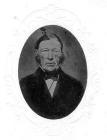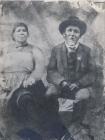1
People of the Gatineau ValleyWith the retreat of the icecap that covered Canada during the last ice age, the Outaouais region was made accessible for settlement, between 10,000 and 8,000 years B.C. The Ottawa River began to be used as a trade route as early as 6,500 years ago and the first evidence of settlement in the Outaouais region dates from 6,000 years ago. Around 4000 B.C., there was a large network of aboriginal communities stretching from Lake Abitibi to the Saguenay, and covering the north-eastern American states. These many different communities shared material goods made of bone, stone, copper, wood, bark, and leather.
The confluence of the Ottawa, Rideau and Gatineau rivers has served for a long time as a meeting, trading, and sacred place to the aboriginal communities of the region. There, a place of abundance, it was possible find plenty of fish and a form of quartz suitable for the manufacture of stone tools. As the site was located at the confluence of three important travel routes along the Ottawa, Gatineau, and Rideau rivers it was a good place to meet and trade with groups heading for their winters camps.
The aboriginal groups who settled in the Outaouais are today called Algonquins. Many still speak Algonquin, an Anishinabe language. Traditionally, the Algonquins had no permanent settlements and moved from one hunting area to the next, traveling by birch bark canoe and living in bark houses, made with wooden poles.
Long after the establishment of aboriginal communities in the Gatineau Valley, at the beginning of the 19th century European settlers moved into the area by canoe or on foot. Having secured land, pioneers built houses and cleared enough land to grow their first crops. The early settlers had to bring in everything they needed to supplement what nature provided.
The first settler to the region was Philemon Wright; he came from Woburn, Massachusetts in 1800. Wright came up the frozen Ottawa River with 25 families and settled in what would later become known as Hull. They had intended to farm, but soon realised the difficulty of the task due to the unsuitability of the land. Consequently, Wright and his followers turned to a new source of profit: the timber resources of the area.
The first settlers to the lower Gatineau Valley were Americans, followed in the 1820s by a large number of Irish settlers and a smaller number of Scottish families. Irish settlers became the early workers in the growing lumber industry, enduring harsh conditions working in the shanties during winter. It was not before the middle of the 19th century that French Canadians, attracted by the lumber business, also settled in the Gatineau Valley, eventually outnumbering any other group of settlers to the region.
Bibliography:
Gatineau Valley Historical Society Files
Gaffield, Chad: History of the Outaouais. Québec: Institut québécois de recherche sur la culture, 1997, 843 p.
Parson, Helen E.: "Land use History of the Gatineau Valley, 1800-1850". In: Up the Gatineau! Vol. 9, 1983, pp. 5-9.
Outaouais no 6: Ottawa Valley Prehistory. Hull, Société d'histoire de l'Outaouais, 1999, 113 p.
2
A history of the Algonquins in the Gatineau Valley, by Ethel Penman Hope16th Century to the 19th Century
Gatineau Valley, Quebec, Canada
Book excerpt:
"As early as the year 1615, a Jesuit missionary, speaking of a trip up the Ottawa, emphasizes the kindly disposition of the Indians whom he met, and speaks of the small fields of corn and squash they cultivated, in imitation of the Hurons, and of their knowledge in the drying of berries, […].
The Indians who roamed the hills of the Gatineau were those whose trails led them north of the Ottawa and south-east of the Temiskaming, Mattawa and Demoine rivers. The social units comprising the bands were the families which consisted of individuals related by descent and blood, together with other women married to the men of the family. The family name provided a surname for the group. With each group there was a family hunting territory in which all the members shared the rights of hunting and fishing. These hunting lots were more or less fixed tracts of land, whose boundaries were determined by certain rivers, ridges, lakes or other natural landmarks, such as swamps and clumps of cedars or pines. […]. There was a comradeship between families; in many instances the more fortunate in territory conceding favours of fishing and hunting to the less favoured, or same privilege being recognized by a gift of meat or furs. The rights in the hunting territories were inherited paternally and were rigid and permanent, very few changes taking place within the range of tradition. They conserved the game of our forests and their wisdom in that line far surpasses ours. Game was kept account of closely, so that it was known how abundant each kind of animal was - and the killing regulated so as not to deplete the stock. Beaver was made the object of most careful farming. The number of occupants, old and young, to each "cabin" was kept count of. In certain districts moose were protected one year - in other districts the next year.
Marriage was determined by the old people of the families. The wife went to her husband's family and lived there, and the children belonged to the father's family and inherited their paternal rights and territory. The Algonquin Indians lived in bark houses, made with poles and formed in tepee fashion, around which long lengths of birch bark would be wound, working upward. These birch bark lengths could easily be taken down and rolled into smaller space for travelling purposes. Among the Algonquins of the Ottawa and Meech Creek Lake district there was little missionary work done until a late date. Anything that was done was in the nature of travelling with different bands and tribes to their hunting grounds and was often accompanied by great danger to the missionary. Later on there was a mission of Oblate Fathers at River Desert. The Ottawas were the first Indians from the Upper Lakes to trade with the French."
Credits:PENMAN HOPE, Ethel: "Early Settlement of Meech Lake", Up the Gatineau!, vol. 10, 1984, pp. 21-22.
3
Indian Encampment on Desert and Gatineau Rivers, ca 187019th Century, Circa 1870
Desert River, Quebec, Canada
 Credits:
Credits:Artist: Alfred Worsley Holdstock (1820-1901)
W.H. Coverdale Collection of Canadiana / Library and Archives Canada, C-040098
4
William Commanda sings 'Sacred Song that Thanks the Creator'Algonquin Land, Canada
 Credits:
Credits:http://epe.lac-bac.gc.ca/100/205/301/ic/cdc/vallee/indexcredits.htm
5
1873 booklet by Joseph Tassé 'La Vallée de L'Outaouais'19th Century, 1873
Gatineau Valley, Quebec, Canada
TASSÉ, Joseph: La Vallée de l'Outaouais. Sa Condition Géographique ; ses Ressources Agricoles et Industrielles ; ses Exploitations Forestières ; ses Richesses Minérales ; ses Avantages pour la Colonisation et l'Immigration ; ses Canaux et ses Chemins de Fer. Montréal, Eusèbe Senécal, Imprimeur-éditeur, 1873, 58 p.
Extracts, pp. 13-15:
"Le comté d'Outaouais est immense ; c'est incontestablement l'un des plus grands du pays. Il a une longueur d'environ 65 milles, et comprend plus de soixante cantons, florissants pour la plupart, et de nombreux villages, où règne beaucoup de vie et d'activité, et où se groupera d'ici à quelques années une population considérable.
[...].
Ses lacs sont immenses et peuplés à profusion des meilleures qualités de poisson d'eau douce. La truite, le doré, l'achigau y atteignent des proportions considérables. Aussi la pêche est-elle fort rénumérative [rémunératrice] pour les colons qui, non seulement en tire parti pour leurs familles, mais écoulent avantageusement de grandes quantités de poisson sur les marchés voisins. [...]. Le vison, la loutre, la marte, le castor, le chevreuil, le caribou et l'orignal rodent en grand nombre dans la forêt vierge, et les disciples de Nemrod leur font durant l'hiver une chasse incessante, souvent fort lucrative.
[...].
Philemon Wright ne laissa personne pour continuer dignement son oeuvre de colonisation, et pendant longtemps ce territoire resta stationnaire. "Jusqu'à ces dernières années," dit une lettre adressée en 1858 à Mgr. l'Évêque d'Outaouais, "la colonisation sur la Gatineau avait été assez peu importante, surtout sur le haut de la rivière ; c'était à peine si l'on trouvait quelques habitants échelonnés de distance en distance le long de la rivière. Mais l'élan général qui s'est manifesté partout dans ces derniers temps pour cette oeuvre importante, a beaucoup contribué à faire connaître ces contrées que les exploitants de bois seuls avaient parcouru[es]. On commence maintenant à y compter un bon nombre de familles, et je puis dire que la plupart des colons qui sont venus s'y établir s'y trouvent heureux et sont bien dédommagés des premiers sacrifices qu'ils ont fait[s] par les bonnes récoltes qu'ils ont recueillies."
Credits:TASSÉ, Joseph: La Vallée de l'Outaouais. Montréal, Eusèbe Senécal, Imprimeur-Éditeur, 1873, 58 p.
Ottawa Public Library, Ottawa Room, 971.38 T212
6
Abigail Wright, 1796-187719th Century, Circa 1870
Location unknown
 Credits:
Credits:GVHS Archives, 01486.a011
7
Thomas Cortes Brigham, 1815 - 187719th Century, Circa 1860
Location unknown
 Credits:
Credits:GVHS Archives, 01463.a011
8
Thomas Kirk, 1783 - 187719th Century, Circa 1870
Chelsea, Quebec, Canada
 Credits:
Credits:GVHS Archives, 02367.a029
9
Marshall Brooks, 1835 - 191419th Century, 1859
Low, Quebec, Canada
 Credits:
Credits:GVHS Archives, 00018.001
10
Hannah Bloss Chamberlin, 1830 - 193119th Century, 1859
Low, Quebec, Canada
 Credits:
Credits:GVHS Archives, 00019.001
11
Thomas Stevenson with his wife Ann19th Century
Wakefield, Quebec, Canada
 Credits:
Credits:GVHS Archives, 00336.004
12
Mr. and Mrs. Robert "Bob" Prentiss, circa 189019th Century, Circa 1890
Rupert, Quebec, Canada
 Credits:
Credits:GVHS Archives, 02169.a020
13
Pakinawatik, first chief of the Kitigan Zibi Algonquin Reserve near Maniwaki19th Century
Kitigan Zibi, Quebec, Canada
 Credits:
Credits:ANASTASE, Roy: "Maniwaki et la Vallée de la Gatineau". Ottawa, Imprimerie du Droit, 1933, cover.
14
James Nesbitt, mayor of Masham North from 1882 to 188419th Century, Circa 1890
Masham North, Quebec, Canada
 Credits:
Credits:GVHS Archives, 01865.001.009